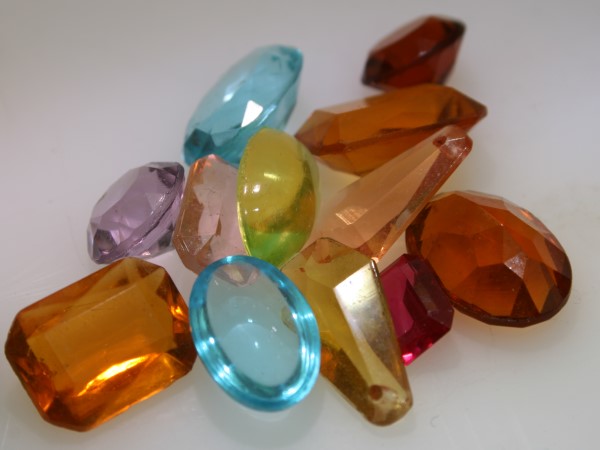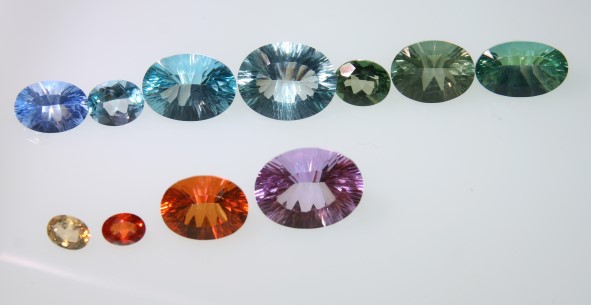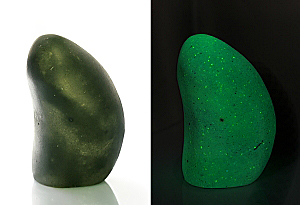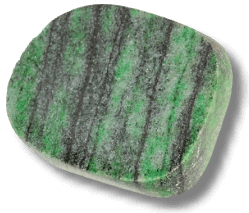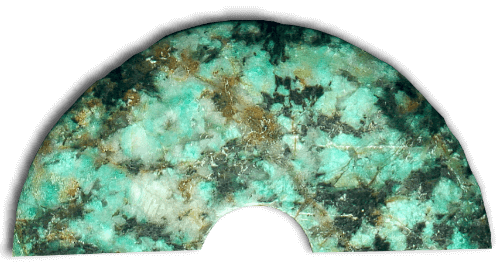
A dioritic rock intergrown with chrysocolla is often missleadingly offered as "African turquoise".
Foto: K. Sieber, www.makrogalerie.de
The finely spread, powdery mineral that gives this rock a blue-green color was offered as »African Turquoise«. As we had our doubts, X-ray diffraction (EDX) analyses have been done to determine the mineral content and the type of rock.
On the basis of the X-ray diffraction the components chlorite, kaolinite, muscovite (illite), quartz, anorthite or albite and possibly epidote and an amphibole could be identified. This mineral composition is typical for a decomposed granitic rock. The results do not provide any information about the identity of the coloring blue-green mineral. Additional thin section analysis clarified the situation.
Thin section analysis showed the mineralogical pattern und indications for a decomposed quartz-diorite in which chrysocolla has been formed mainly along fissures and crevices.




